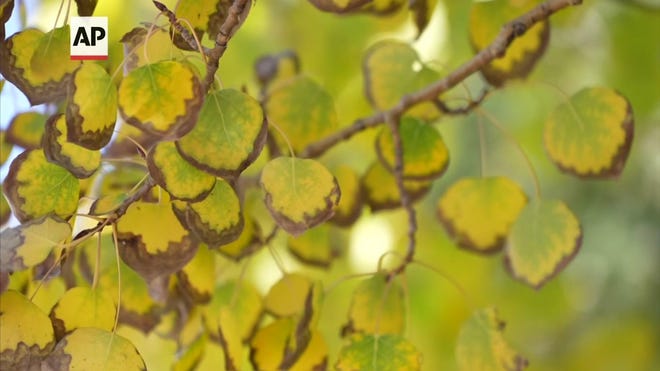
When it comes to falling leaves this year, what's the best practice? To rake or not to rake?
Put that tool away, because for overall yard health and the planet, some experts recommend to skip it and leave them on the ground.
Joe Boggs, an entomologist and assistant professor with Ohio State University's Extension, said in most cases, keeping leaves on the ground is not an issue.
In landscapes around trees, shrubs and on top of mulch, leaves are how trees naturally recycle nutrients to plants that can be used again.
NOAA 2021 Winter Outlook: Ohio Valley predicted to see wetter-than-average conditions
'It's not imaginary:' Yellow jackets, wasps and hornets are out in force. Here's why
What you should do with your leaves instead
If you choose not to rake this year, breaking up leaves with a mulching mower as opposed to bagging will allow ground-up leaves to return to the top of the earth.
When it comes to those who are worried about trees dropping too many leaves and possibly choking the grass underneath, Boggs said that's nearly impossible and the overall benefits of not raking and bagging leaves outweigh the risk.
More:If you're noticing more acorns on the ground this year, you're not wrong
More:Ohio's fall color delayed due to warm temperatures, clouds and rain
Environmental benefits
According to data from the U.S. Environmental Protection Agency, landfills in 2018 received approximately 10.5 million tons of yard trimmings.
"Taking leaves off site is a last resort, and I'm hard pressed to say that's a good idea," Boggs said. "The key is to try to reduce yard waste going into landfills."
Typically, Boggs said he recommends around four fertilizations of grass per year: two in the spring and two in the fall. If you return grass and leaf clippings to the ground, you can cut the two spring fertilizer applications in half and use half as much nitrogen fertilizer.
"The horticulture benefits are a plus and they far outweigh any negative thing I can think of," he said.
David Mizejewski, a naturalist at the National Wildlife Federation, told USA TODAY the layer of leaves are an important wildlife habitat that can form an entire ecosystem.
“There are probably thousands of different species that actually live in that leaf layer,” Mizejewski said. "Most of them are invertebrates, so think of everything from earthworms and little pillbugs and all sorts of little critters that live in that leaf layer. But also higher up the food chain, salamanders, toads, box turtles, shrews and chipmunks”
Caterpillars also often find a home in leaf layers, which provides food for birds.
Source link








